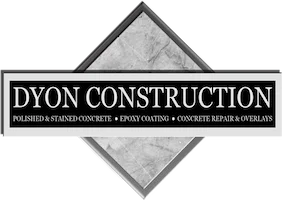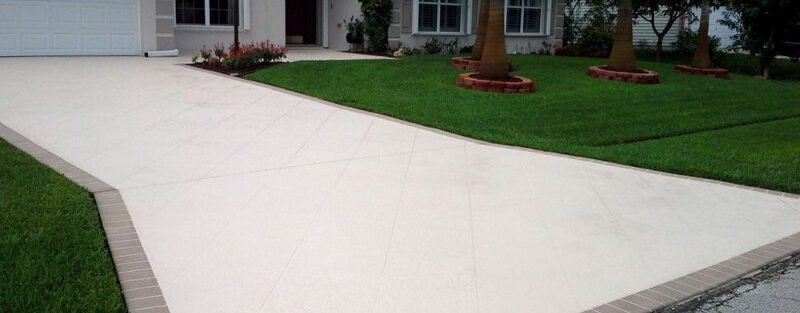Introduction
Choosing the right method to rejuvenate your concrete surfaces can be a daunting task. Two popular techniques are concrete overlay and concrete resurfacing. Both methods can restore the appearance and functionality of worn or damaged concrete, but they have distinct differences. This article will delve into these two options, examining their processes, benefits, drawbacks, costs, durability, and best applications to help you make an informed decision.
Overview of Concrete Overlay
Concrete overlay involves applying a thin layer of cement-based material over existing concrete surfaces. This layer can be as thin as 1/8 inch or as thick as 2 inches, depending on the condition of the existing surface and the desired finish. Overlays are versatile, allowing for various textures, colors, and patterns, including stamped and stained finishes. The primary purpose of an overlay is to cover imperfections such as cracks, discoloration, or minor damage, providing a fresh, new look without the need for complete removal and replacement of the existing concrete.
Overview of Concrete Resurfacing
Concrete resurfacing, also known as concrete restoration, involves applying a new layer of concrete or a polymer-modified concrete mixture over an existing surface. This process can address more significant issues than an overlay, such as extensive cracking, spalling, or scaling. Resurfacing can also incorporate decorative elements like colorants, stains, and stencils, but its primary focus is on restoring structural integrity and providing a durable, long-lasting finish. Resurfacing typically involves more preparation and material than an overlay, making it suitable for surfaces that require substantial repair.
Pros and Cons of Concrete Overlay
Pros
Concrete overlays offer several advantages. They provide a cost-effective solution for enhancing the appearance of concrete surfaces without the need for complete replacement. The application process is relatively quick and can be completed with minimal disruption. Overlays are highly customizable, allowing for a wide range of finishes, from smooth to textured, and can mimic the look of more expensive materials like stone or tile. Additionally, overlays can be applied to both horizontal and vertical surfaces, making them versatile for various applications.
Cons
However, concrete overlays also have their limitations. They are best suited for surfaces with minor imperfections and may not be durable enough to address significant structural issues. Overlays can be prone to delamination if not applied correctly or if the underlying concrete is not adequately prepared. Temperature fluctuations and heavy traffic can also affect the longevity of an overlay, potentially leading to cracking or peeling over time. Regular maintenance, such as sealing, is necessary to protect the overlay and extend its lifespan.
Pros and Cons of Concrete Resurfacing
Pros
Concrete resurfacing is a robust solution for surfaces with extensive damage or wear. It can restore structural integrity and provide a smooth, durable finish that withstands heavy use and harsh weather conditions. Resurfacing can also be customized with various decorative elements, adding aesthetic appeal to functional repairs. The process can significantly extend the life of existing concrete, making it a cost-effective alternative to complete replacement. Moreover, resurfacing materials are often engineered to bond strongly with existing concrete, ensuring long-term durability.
Cons
On the downside, concrete resurfacing can be more labor-intensive and time-consuming than applying an overlay. The preparation process is critical and may involve extensive cleaning, grinding, or repairing of the existing surface to ensure proper adhesion. The initial cost of resurfacing can be higher than an overlay, although it is generally less expensive than full replacement. Additionally, resurfaced concrete requires proper curing and maintenance to prevent issues such as cracking or discoloration over time.
Cost Comparison
When comparing costs, concrete overlays generally have a lower initial expense due to the reduced amount of material and labor required. The cost of an overlay varies based on the thickness, complexity of the design, and surface preparation needs. In contrast, concrete resurfacing typically involves a higher upfront cost due to the more extensive preparation and application process. However, the long-term benefits of resurfacing, such as improved durability and extended lifespan, can offset the initial investment. Both methods offer a more affordable alternative to complete concrete replacement.
Durability and Longevity
Durability and longevity are crucial factors in choosing between an overlay and resurfacing. Concrete overlays provide a durable surface for light to moderate use, but their longevity can be affected by factors such as traffic load, environmental conditions, and maintenance practices. Properly installed and maintained overlays can last several years, but they may require periodic resealing or touch-ups.
Concrete resurfacing offers superior durability and longevity, especially for surfaces subject to heavy use or harsh conditions. The new layer of concrete or polymer-modified material bonds strongly with the existing surface, creating a robust and long-lasting finish. With proper installation and maintenance, resurfaced concrete can last for decades, making it a worthwhile investment for significantly damaged or heavily used surfaces.
Best Applications for Each
Concrete overlays are ideal for residential and commercial settings where aesthetics and minor repairs are the primary concerns. They are suitable for patios, driveways, walkways, pool decks, and indoor floors, providing a fresh, decorative finish without extensive structural work. Overlays can also be used to update the appearance of vertical surfaces such as walls or countertops.
Concrete resurfacing is best suited for surfaces requiring substantial repair or restoration. It is commonly used in industrial and commercial settings, such as warehouses, factories, and parking garages, where durability and structural integrity are paramount. Resurfacing is also appropriate for residential applications with significant wear or damage, such as heavily trafficked driveways or large outdoor areas exposed to extreme weather conditions.
Conclusion
Choosing between a concrete overlay and concrete resurfacing depends on the condition of your existing concrete, your budget, and your desired outcome. Concrete overlays offer a cost-effective and versatile solution for enhancing the appearance of lightly worn surfaces, while concrete resurfacing provides a durable and long-lasting option for significantly damaged areas. By carefully considering the pros and cons of each method, you can select the best choice for your specific needs, ensuring a beautiful and functional concrete surface for years to come.

